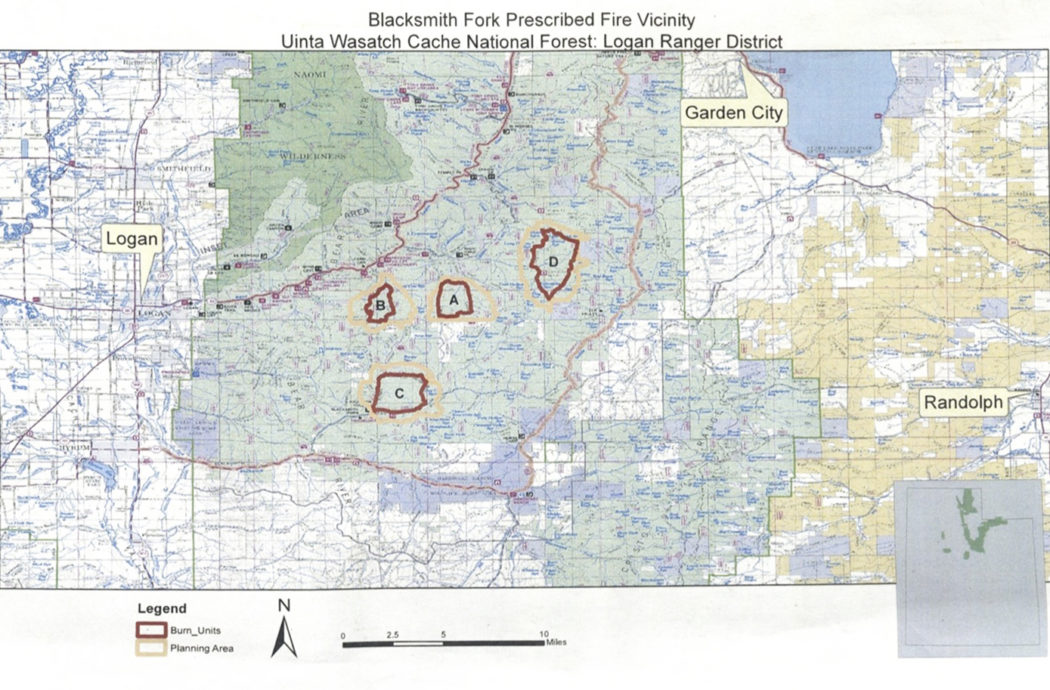Multiple prescribed fires planned for Cache National Forest
The Logan district ranger’s office of the Wasatch-Uinta-Cache National Forest is planning to set four sections of the Cache National Forest ablaze, and could start as soon as today.
These prescribed fires are lit periodically to mimic natural fire progression and to help maintain biodiversity in the forest, said Jennefer Parker, the Logan district ranger.
“Aspen regeneration is our primary focus,” Parker said. “We want to diversify our classes of aspen and begin renewing grasses and shrubs for big game and livestock grazing.”
The dates these fires will be started are not yet known, Parker said, as weather conditions must be ideal to reduce concerns about air quality.
“We have a burn plan that decides what conditions are needed,” she said. “There is a weather station in the area, and when we decide we are getting close to the right conditions, we start to get the staff ready. Right up until the moment we ignite it, we could cancel it.”
The first two areas to be burned are south of Highway 89 near Card Canyon, with two more spots to the east planned for later in the fall. Parker said that locations are chosen well in advance of the fire.
“We’re usually looking for areas where conifers are taking over aspen stands, or where we are seeing a lot of older aspens and subalpine firs,” Parker said. “In the natural environment you’d have a lot of burns to come through and regenerate growth that would keep aspen stands young and healthy.”
Before human-caused infernos, forests would experience understory fires every few years that burn out small saplings without damaging older trees, said Larissa Yocom, an assistant professor of wildland resources at Utah State University.
“Fires used to burn through these systems, but the interval between fires was very low,” Yocom said. “Once you had an end to this system, seedlings came through and crowded the forest which heightens the risk for crown fires.”
A crown fire, Yocom said, is a fire that consumes the whole forest, and kills even the older trees. These fires are hard to contain and pose a greater risk to cities near wildlands than understory fires, she said.
“I think a side benefit is that fuels will be reduced,” Yocom said, “so if there is a fire around here, it could slow it down or bring it to the ground. As far as reducing fire hazard, we will just have to see.”
Parker said when conditions are right, they will start by “blacklining” the area, burning a line around the circumference to prevent the prescribed fire from crossing into unwanted areas.
“We start the fire with a helicopter,” Parker said. “It drops fuel on the area, and a torch mounted underneath ignites it.”
While there will most likely be smoke visible from the fires, Yocom and Parker both said it will be minimal, as these fires are much smaller and more controlled than wildfires.
“You still have to be careful,” Yocom said, “but in a lot of cases, managed wildfires could be a good solution to multiple problems.”
—carter.moore@aggiemail.usu.edu
@carterthegrreat

